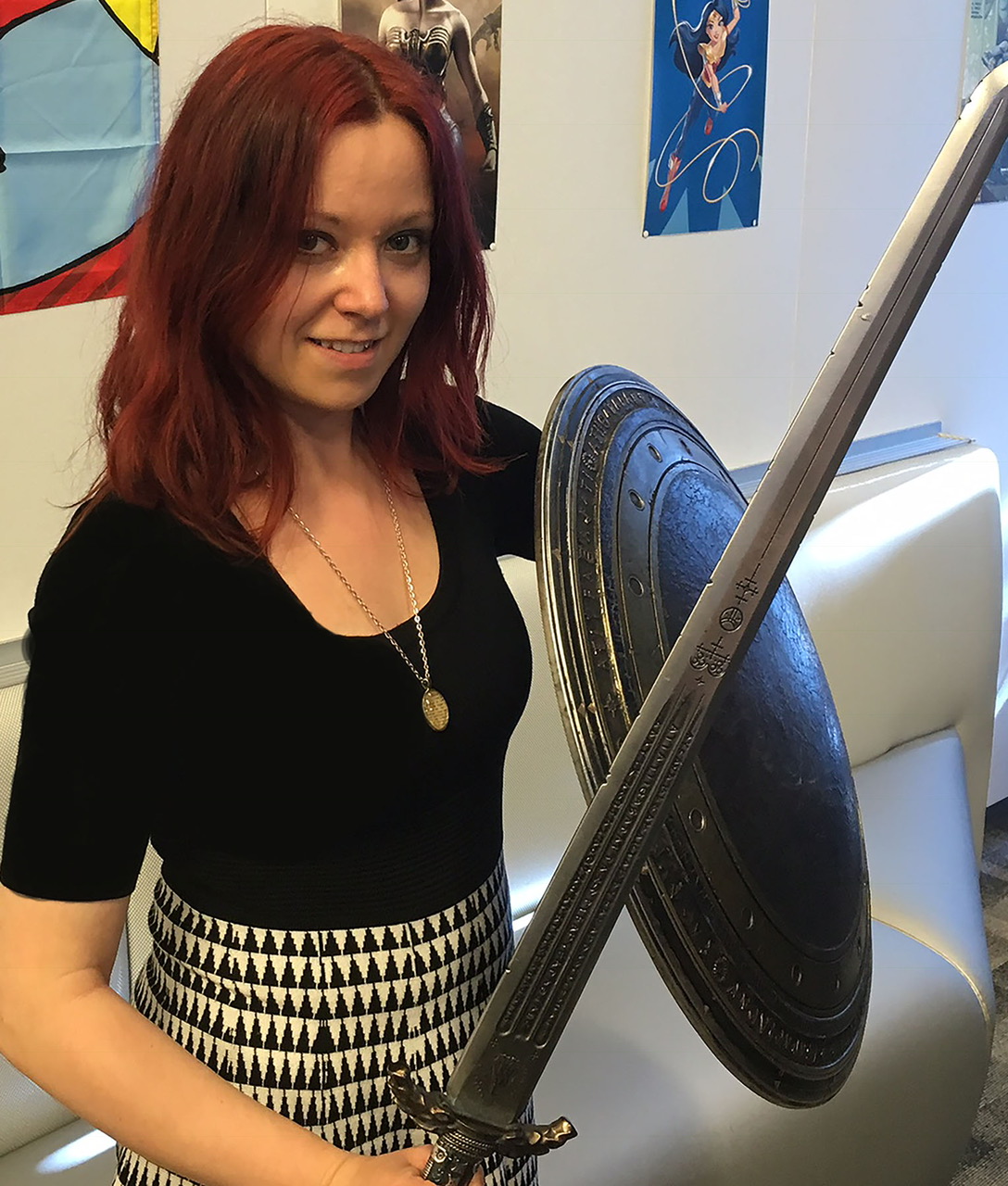
Dr. Janina Scarlet
from http://www.superhero-therapy.com/meet-the-doctor/
We had the distinct pleasure of getting a chance to talk with Dr. Janina Scarlet last month about her unique approach to therapy, called Superhero Therapy. This model uses clients’ connections and identifications with superheroes or fictional characters to motivate clients for change and instill hope. To learn about what Superhero Therapy is, visit her website here.
Below is a transcript of a conversation we had with her about how to use superhero therapy, particularly for our clients. It has been shortened for length.
EBBTC: At the practice we see a lot of kids with OCD, and I was wondering if you’ve had a case of OCD, and how you’ve used superhero therapy to treat that.
Dr. Scarlet: Sure, the idea is that a lot of times kids or adults or teenager or whoever you’re working with are afraid of something. So whether it’s a fear of being contaminated, or fear of their parents dying—the idea becomes, how can we become superheroes in real life. Superheroes all face their fears. They’re afraid, but they’re facing their fears anyway. This is called courage. So I use that as a way to introduce exposures.
As a way to practice exposure response prevention, I might first talk about their heroes, to allow them to align with a role model, to show them that it’s ok to be afraid. Like Batman, for example, who designed his symbol after the thing he was most phobic of—he was afraid of bats. We can talk about facing our fears in that way, creating this kind of role model, and for some kids, I even allow them to wear capes while doing exposures. For example I have a Batman cape in the office I allow them to borrow it when they do exposures.
EBBTC: That sounds like a great way to build willingness to do exposures.
Dr. Scarlet: Right. Sometimes when I assign other challenges, for them to do exposures outside of the office, to go home and do them, I sometimes call it like being a secret superhero. Like, being Batman is not only being Batman, he’s also Bruce Wayne, but he’s still a superhero, he’s still trying to do the right thing. Same with Superman and Clark Kent. So it’s almost as like, they’re undercover. So how can they find a challenge when they’re undercover, when they’re not in the office, and do an exposure and face their own villains.
EBBTC : Well, have you ever run into clients or patients who say, “Oh, but that’s Batman. He’s fictional. I can’t do that”
Dr. Scarlet : Mm hmm! Absolutely. It’s true, he is fictional. The reason why he’s as successful as he is, is because he’s relatable in a lot of ways. This is a person who experienced some of the worse tragedies possible, and later when he was an adult he lost a lot of people close to him. He lost people who were like children to him, and he lost people who were his partners. And what he does with that loss is he puts it into trying to be heroic and help others. And the truth is that this is built on real life elements. So although our clients did not grow up in a mansion, and have parents who were billionaires and uses a Batmobile or something, they nevertheless can be their own version of a hero. There are different ways that someone can be a superhero, whether it’s an obvious one or one in disguise.
Superheroes all face their fears. They’re afraid, but they’re facing their fears anyway. This is courage. Click To Tweet
EBBTC: When you put it that way, it’s true that all the traumas that are described are still possible, real traumas, and it sounds very empowering to hear it that way and to think about relating it to a client’s life that way.
Dr. Scarlet: And that’s the goal, to empower our clients. A lot of times they think of their difficulties as limitations, and I want to change them to origin stories.
EBBTC: I noticed on the website, that you mentioned a lot of different pop culture icons. You’re ranging from Batman, Superman, to Doctor Who, I think you mentioned Buffy the Vampire Slayer, Wonder Woman… so I’m wondering—how do you keep up on all of these stories? What about ones you haven’t heard before?
Dr. Scarlet: Thank you for asking that question. We don’t have to be experts in pop culture. Our client are experts in pop culture. We just have to be open-minded and curious, and we have to be experts in therapy. Sometimes I will watch an episode my client mentions, and it’s I’ll give you an example—recently I’ve been working with an adult client who really identifies with Steven Universe. So I asked for a recommendation—I told her I’d be willing to watch one. So I watched this episode and it was really empowering for me to understand this and to understand her. And it was empowering for her to have me understand this and speak in her language and her terms. I ask a lot of questions, I assign homework practices like creating your own comic book or character sheet, but the research actually comes more from the client, than from myself.
EBBTC: I imagine there must a lot of work initially in helping them identify a character they do relate to. Is that true?
Dr. Scarlet: Right. And initially I might ask, is there a character you relate to? I might make some recommendations, if I know of some characters who might have struggled through something similar. I find that, in therapy anyway, it’s the similarity of a struggle that’s most important. Even if it’s OCD, and your client is giving examples of a phobia, there’s still a lot of understanding of that experience.
People think of their difficulties as limitations, and I want to change them to origin stories. Click To TweetEBBTC: Do you have a favorite character to work with?
Dr. Scarlet: I’m a big fan of Harry Potter. So, I love pretty much every character in Harry Potter. But my favorite superhero of all time is Storm, from the X-Men.
EBBTC: Yes, you mentioned she was the one you personally related to when you were doing your own work. Well, as we’re wrapping up, I’d like to know what you see as the future is for superhero therapy.
Dr. Scarlet: I’m hoping that more practitioners will be willing to incorporate it, especially when clients identify with these characters. Pop culture is so prevalent in this country, especially in California. Cali is like the geek mecca. I think we owe it to our clients to speak their language and understand what they’re going through, even if we don’t know every single character they’re talking about, but just to understand their interests, and not to just dismiss them.
A big thank you to Dr. Scarlet and her team for being helping set up this interview and sharing about Superhero Therapy with us! To learn more, find out about Dr. Scarlet’s book, and find out when she will be presenting, visit her website.




